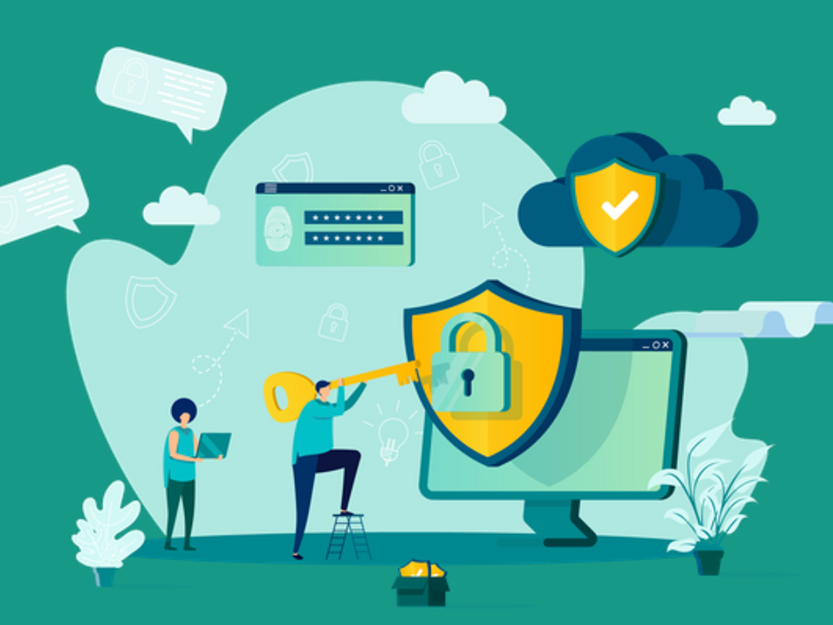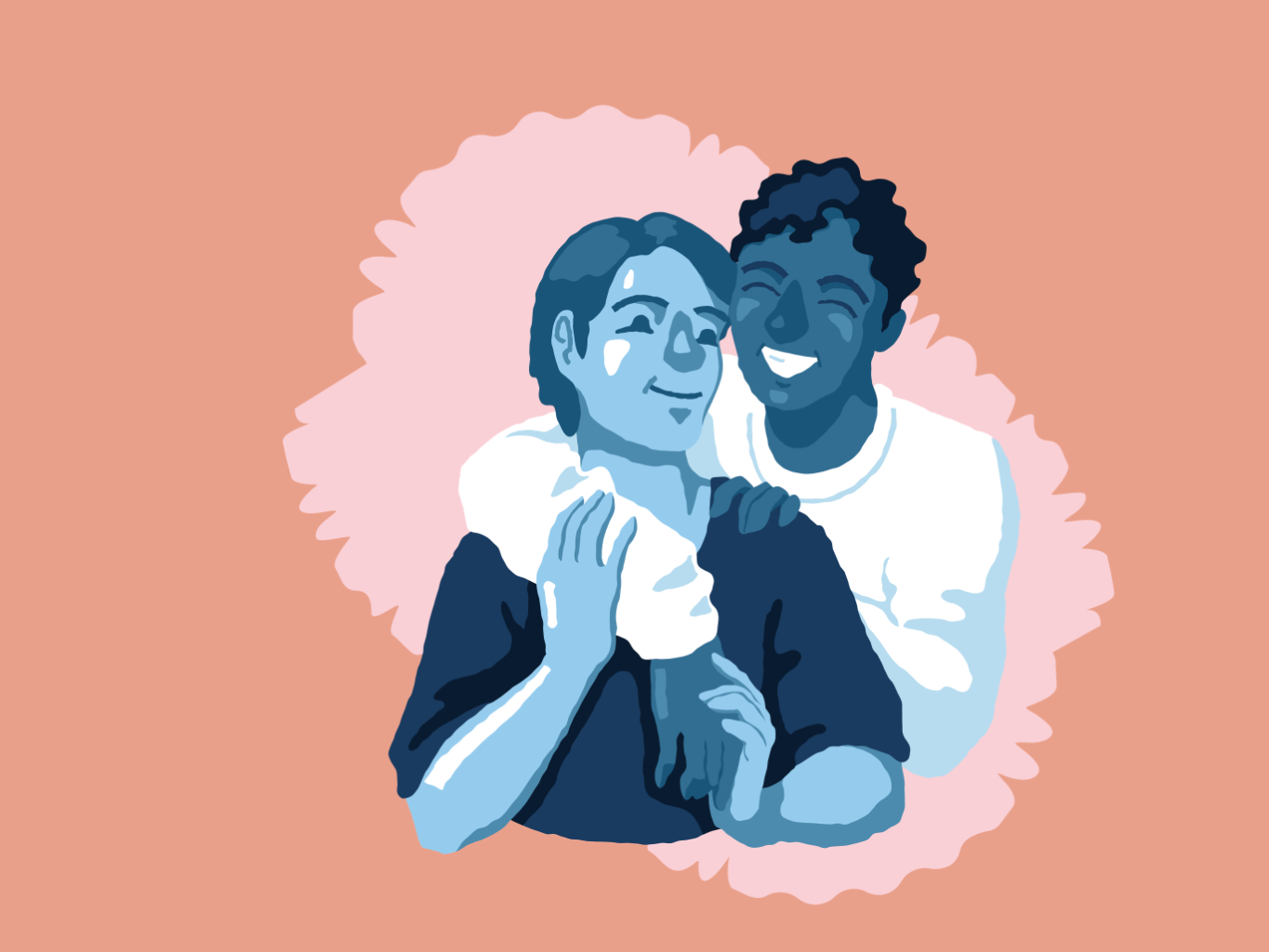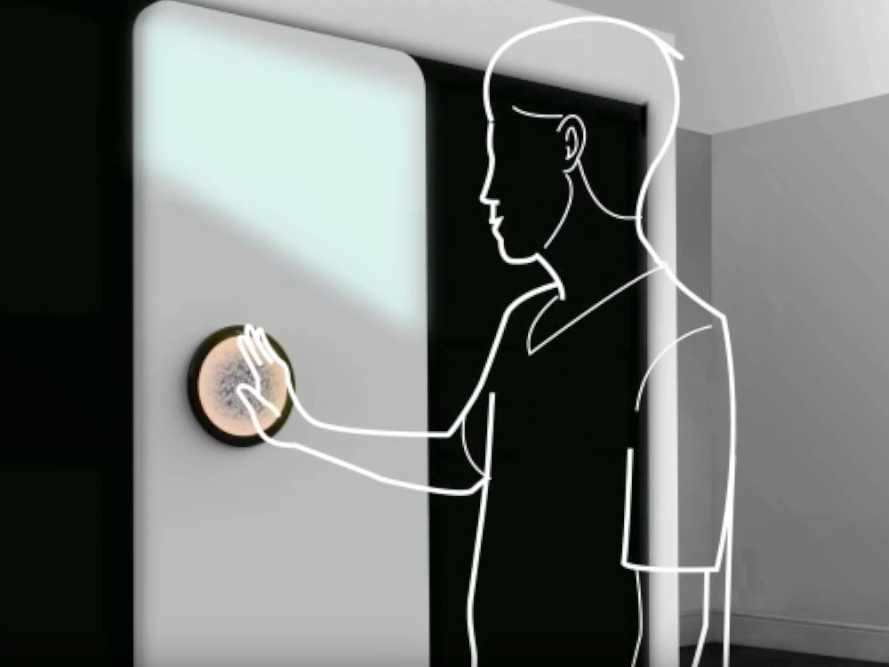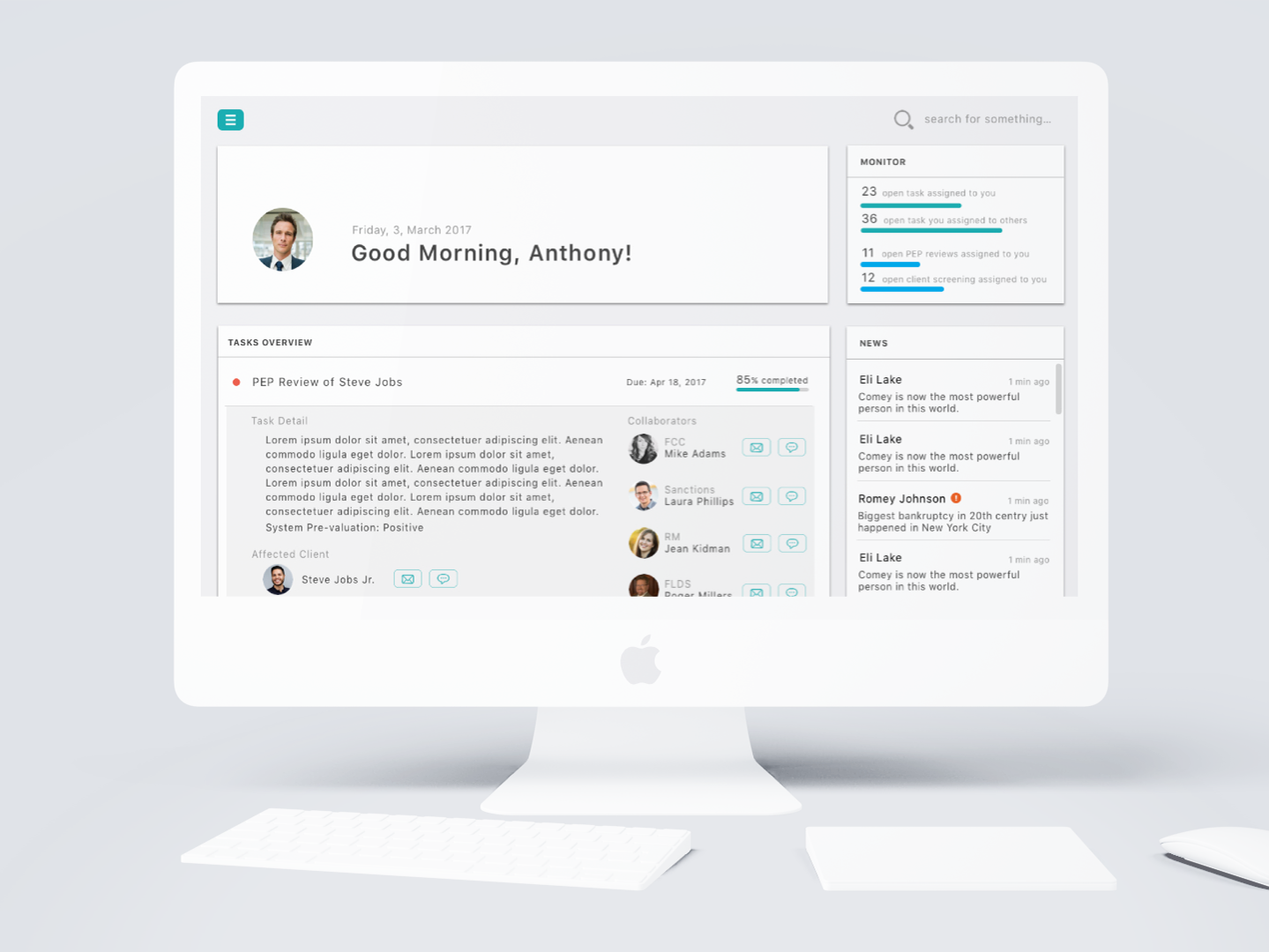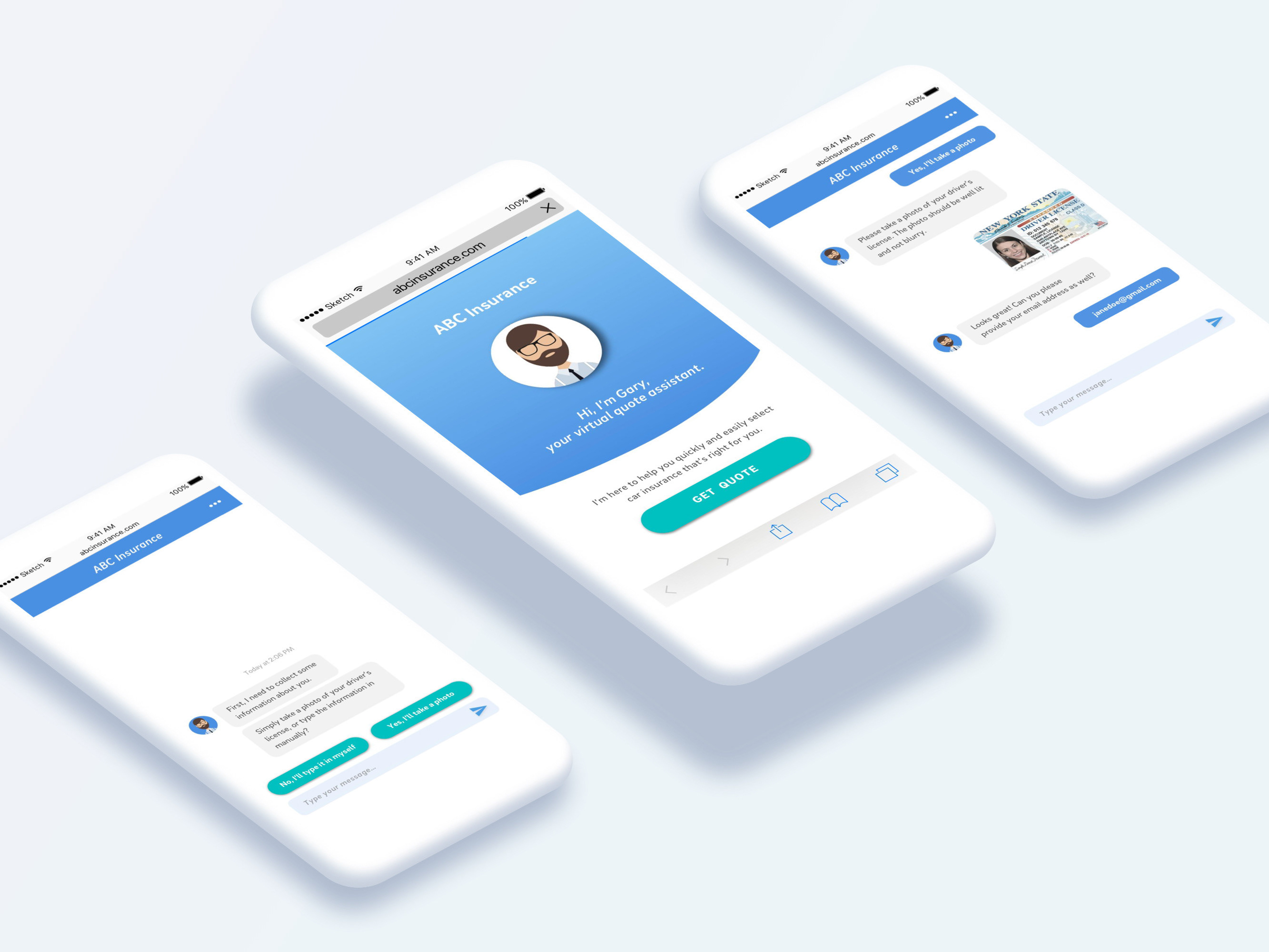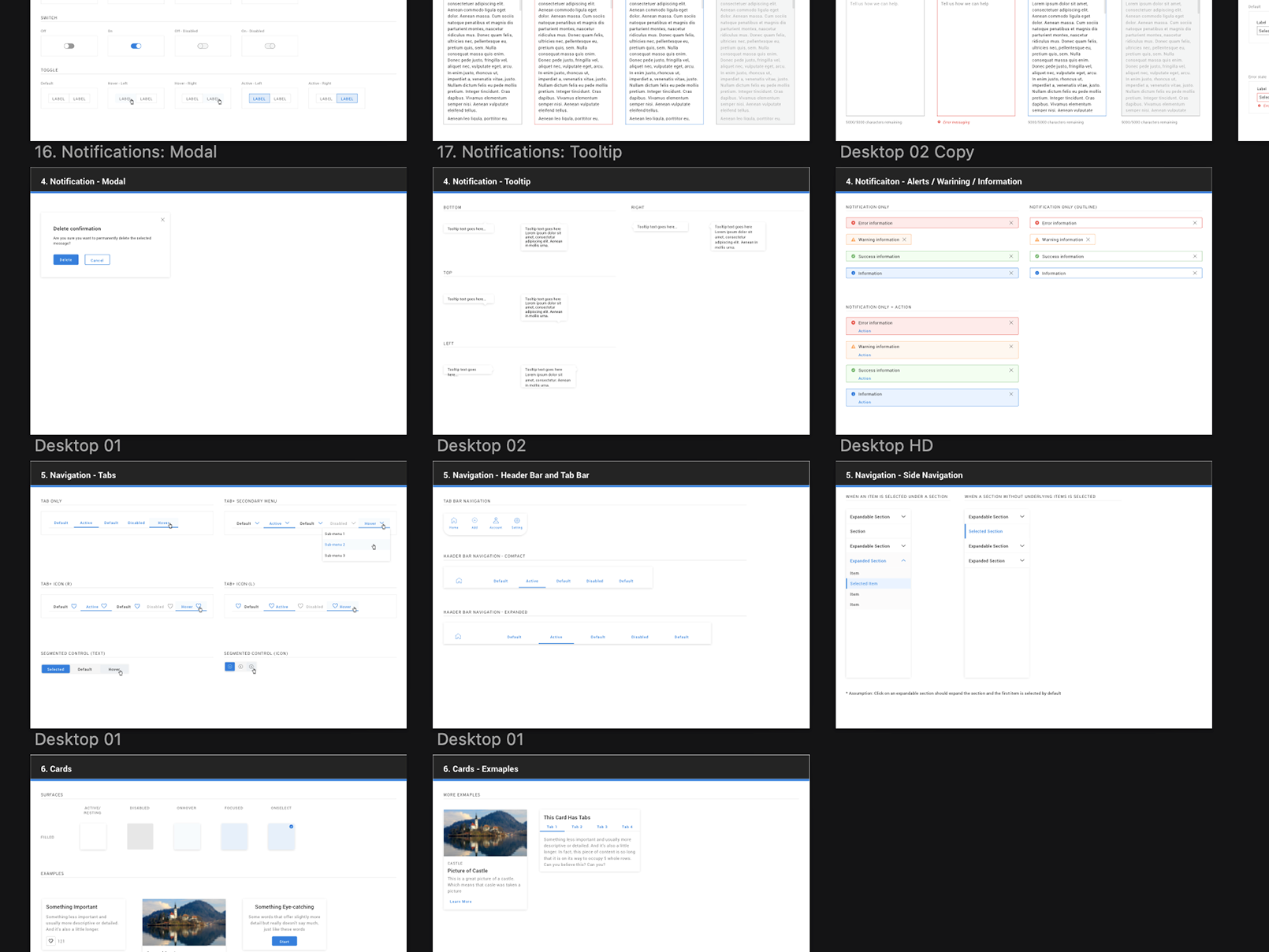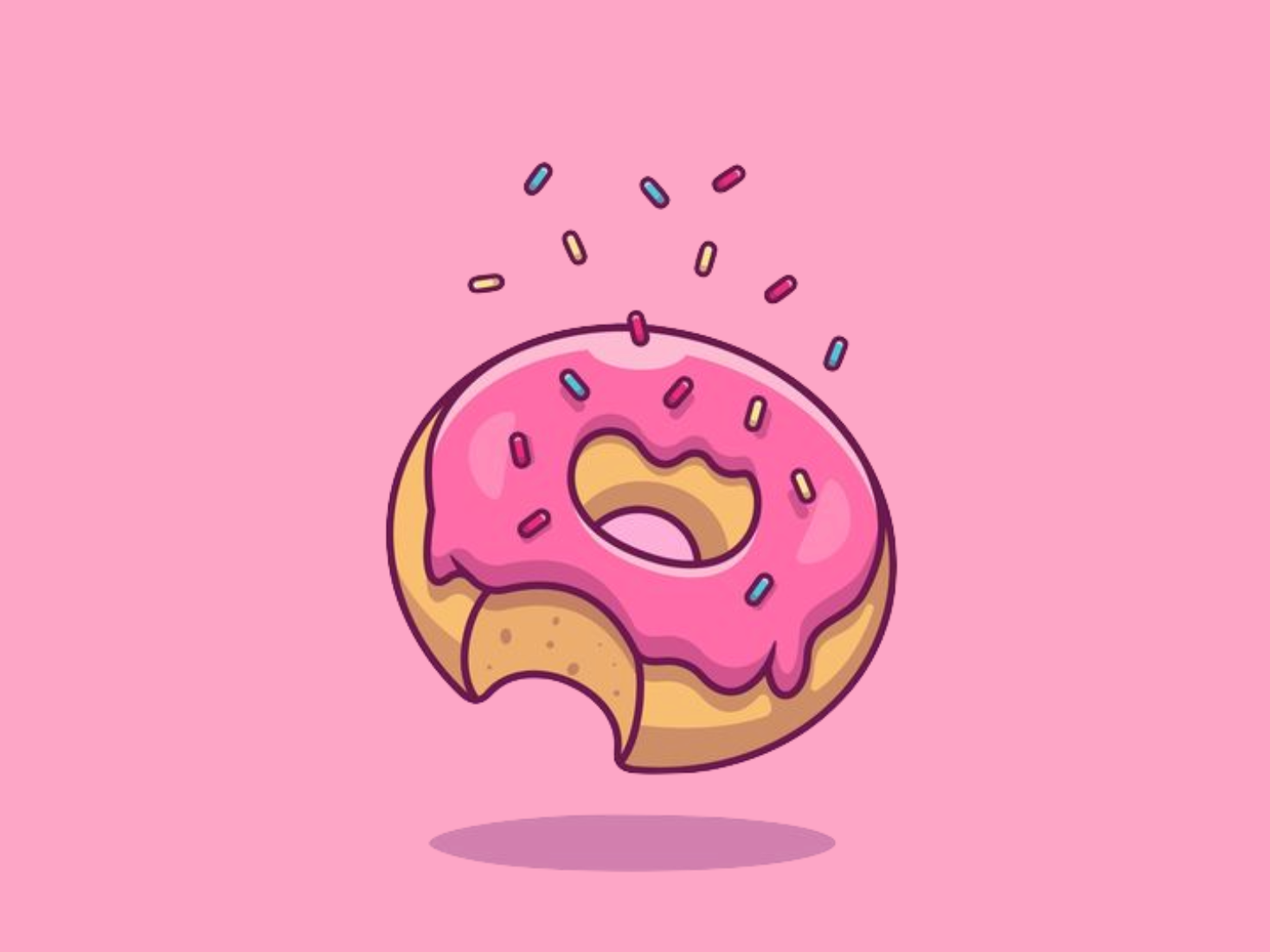About FoodShare
FoodShare is a mobile application that helps to redistribute the surplus food of individuals, families, restaurants, and supermarkets to people who need it. By providing a platform where users can share and request for food, FoodShare can solve the food waste and hunger issues together.
In the testings, the potential users gave positive feedback and believe that it can be really useful and beneficial to solve the real-world problem. Everyone can be a food sharer: students, housewives, you and me. Everyone can contribute to make the world better.
In the testings, the potential users gave positive feedback and believe that it can be really useful and beneficial to solve the real-world problem. Everyone can be a food sharer: students, housewives, you and me. Everyone can contribute to make the world better.
The Dilemma: Food Waste & Hunger
n the United States, food waste is estimated at about 40 percent of the food supply. This estimate, based on estimates from USDA’s Economic Research Service of 31 percent food loss at the retail and consumer levels, corresponded to approximately 133 billion pounds and $161 billion worth of food in 2010.
While the food wasting situation continue to deteriorate, 40 million people face hunger in the U.S. today — including more than 12 million children and nearly five million seniors. Hunger knows no boundaries — it touches every community in the U.S., including your own.
Field Research
To validate this issue and to gain realistic understanding of it, I interviewed 15 people in a local soup kitchen. They are people who has very low food security and need food urgently. Four common user needs are shared among them:
1. Access to available, surplus, and free food
2. Receive food donation from restaurant and supermarkets
3. Have healthier food options
4. Connect with others and build communities
2. Receive food donation from restaurant and supermarkets
3. Have healthier food options
4. Connect with others and build communities
On top of that, I also interview shop owners, restaurant owners, and even college students on how do they deal with surplus food and what's their attitude toward the food wastage in US. The result is: they all wish to donate the surplus food to those in need, but they don't know how. They don't know how to identify and connect to people who might need food efficiently. Mostly, they don't want to get into trouble if people sue them for feeling ill after eating the shared food items.
Ideation
To facilitate the ideation process, I created a persona, John, a 46 years old male who lives below the poverty line and has low food security. Also, I create his user journey to understand his emotional response and physical action in his daily life, especially focus on the scenario when he is seeking for food. The findings and pain points led me to the mission statement:
How might we solve the food wastage and hunger in US by redistributing the surplus food resource to those in need?
Food Sharer:
When having unused food in good condition, users can post a food sharing information on FoodShare and let others aware of this.
Food Requester:
Users can view and see the details of food that has been shared around them. If they want to, they can request for it, message the sharer, and have further discussion and how to get it.
Mobile Application
When deciding what kind of device should FoodShare be on, mobile device become a great answer since its portability and omnipresence. Some might think that food requesters would not have a mobile phone since most of them are financially challenged. However, research shows that more than 60% of people living under the poverty line own functioning mobile phones. This echos my research findings as well, all of the interviewers in this project own a functioning, smart, mobile phone. According to the interviewees, mobile phones are more than a way to communicate for them, it means security and the ability to reach out in emergencies.
For those who doesn't have a mobile phone, stationary tablets in public spaces, such as bus stops, churches, and community centers, would be an alternative way to access to FoodShare.
For those who doesn't have a mobile phone, stationary tablets in public spaces, such as bus stops, churches, and community centers, would be an alternative way to access to FoodShare.
Start From Scratch
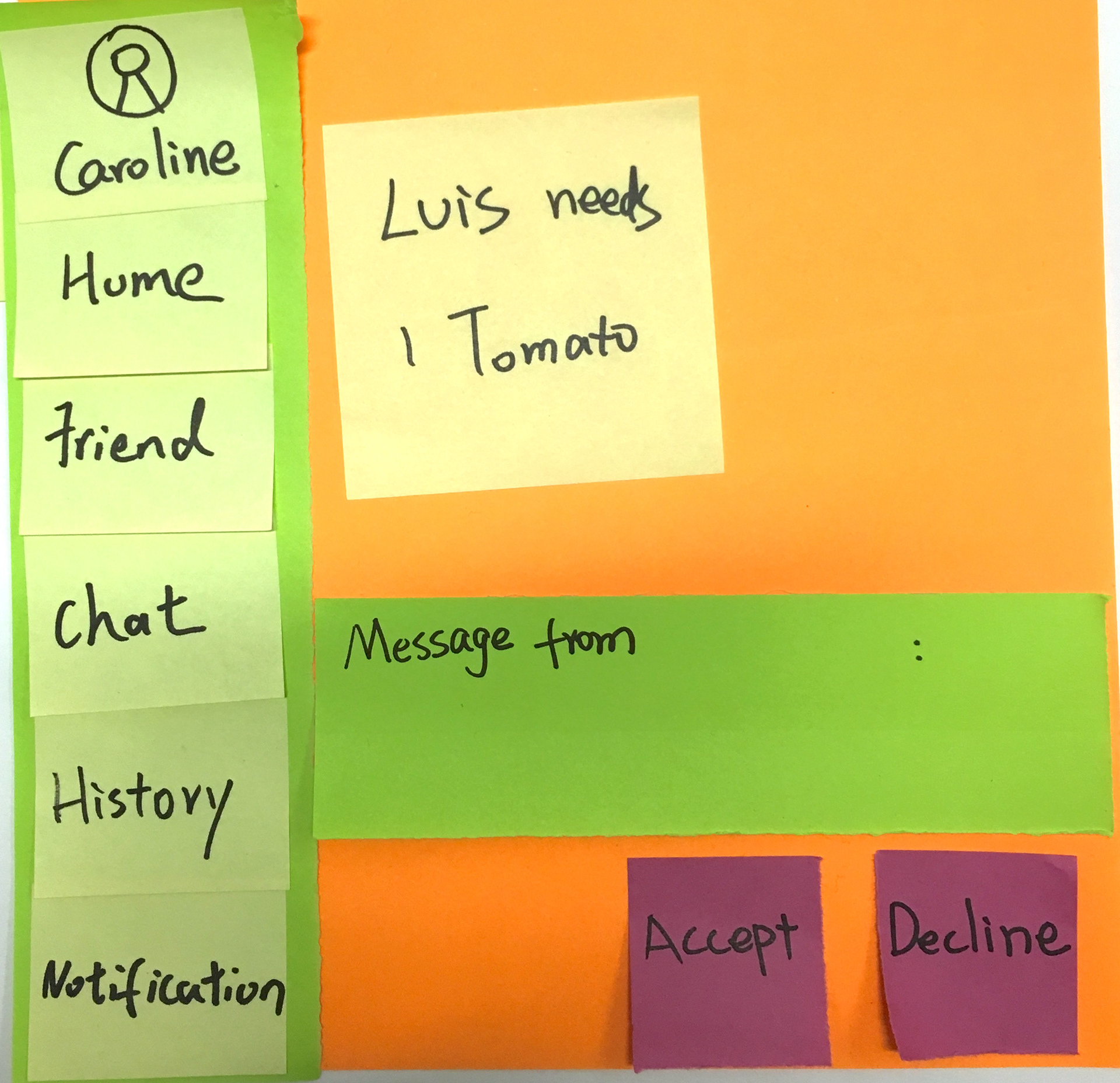
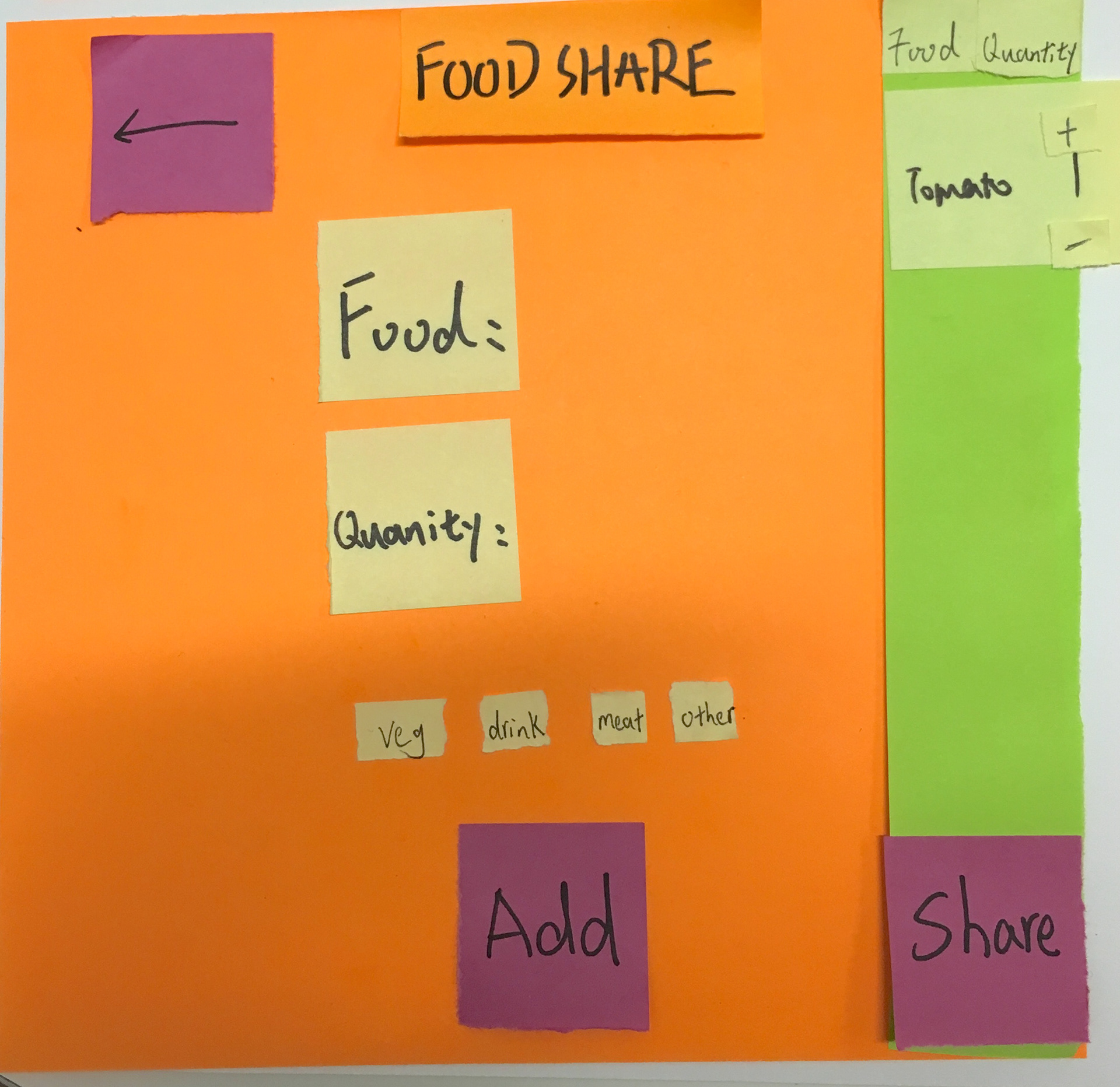

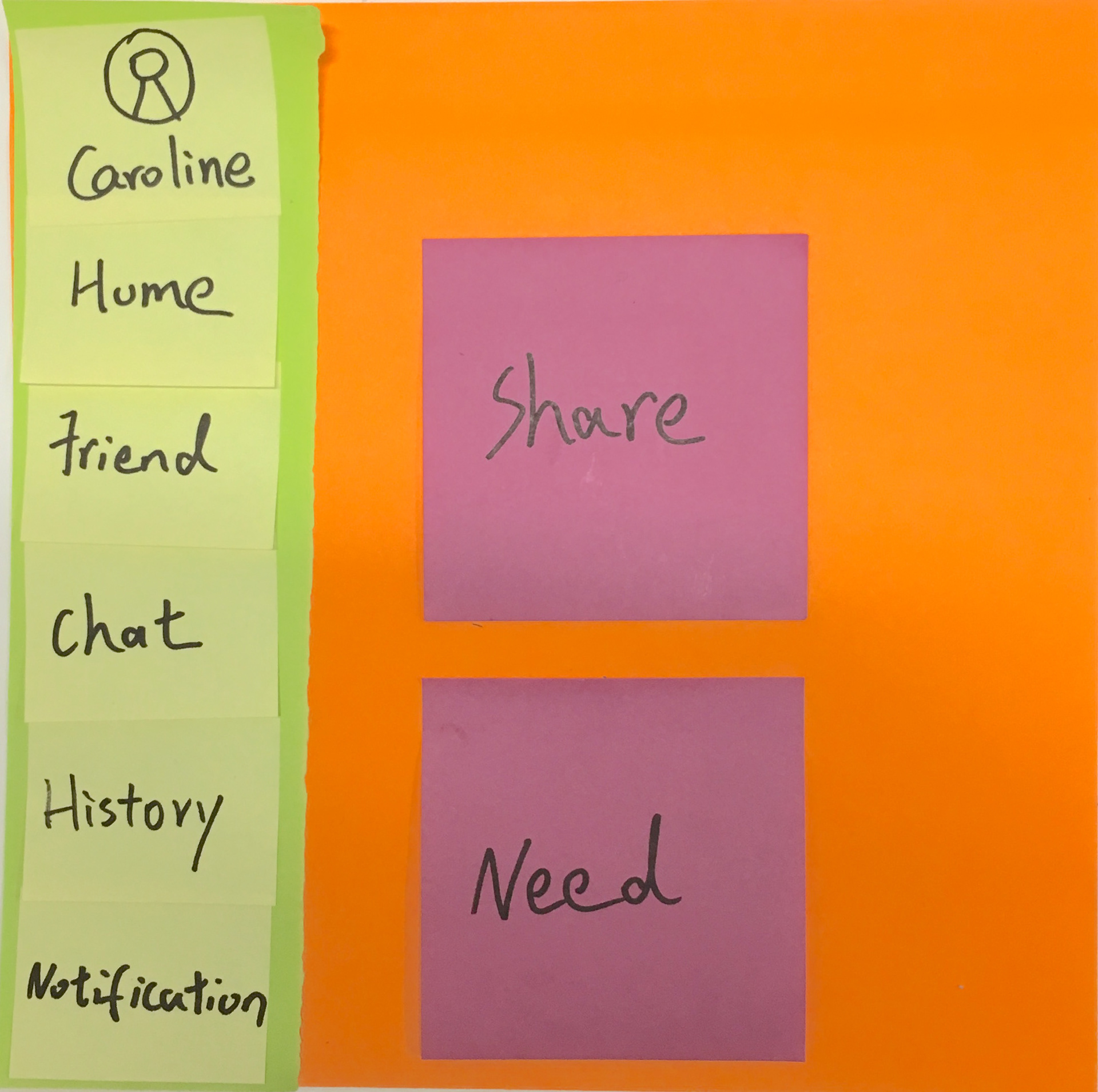
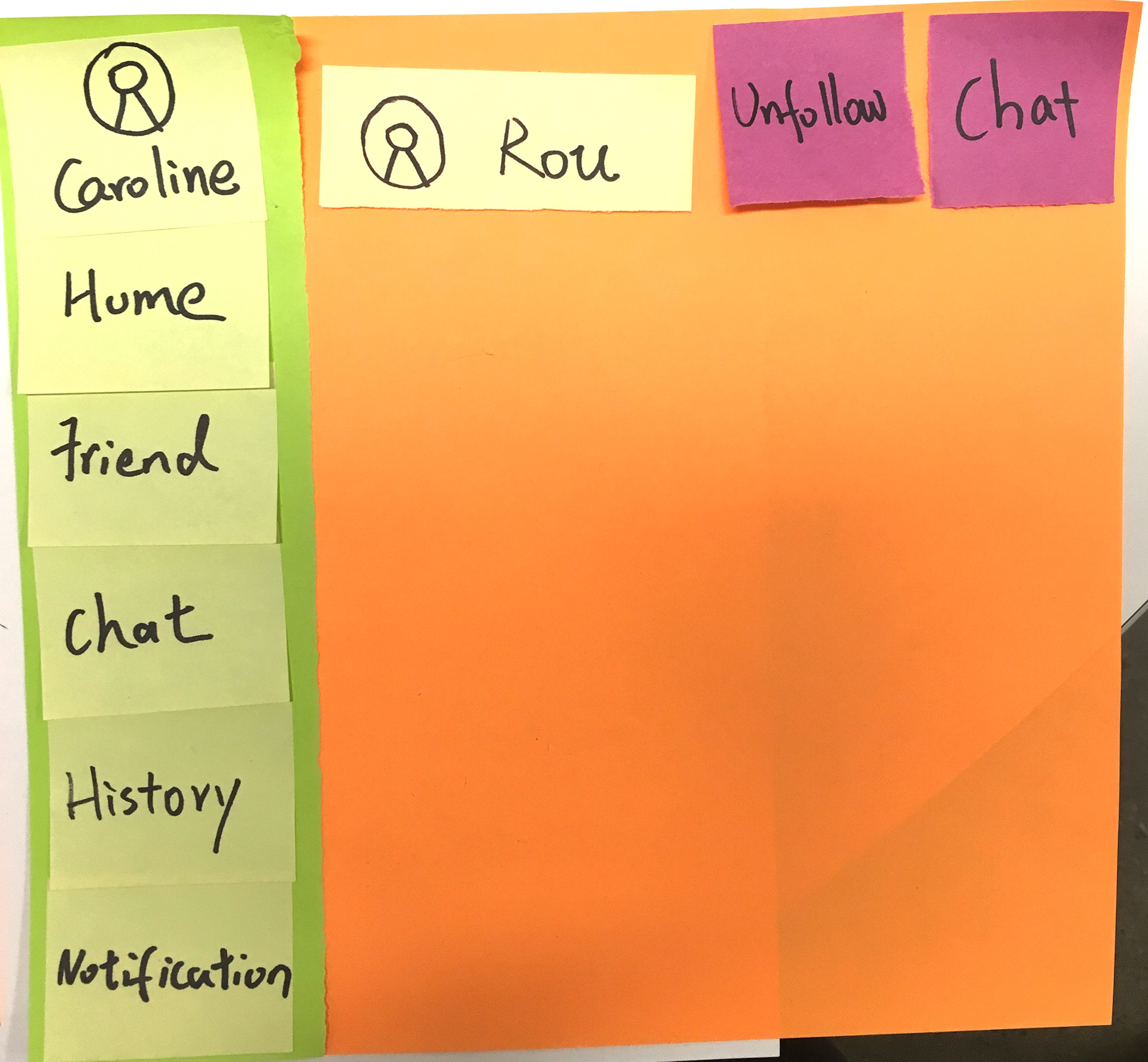
I designed a low-fidelity paper prototype, which is easy to be future iteration on. It's a very powerful tool in early design phase since designers won't get attached and defensive to it.
User Testing
I interviewed 5 target users and 5 college students with the paper prototype. Here are 4 major findings:
1. The History feature is confusing. Users think it's similar to chat and notification.
2. The request process is too complicated. Users didn't know they should chat with the sharer before clicking the confirm button.
3. No feedback after users shared some food. Users weren't not sure whether they have successfully shared it or not.
4. How should we make sure the food they are sharing is in good condition?
2. The request process is too complicated. Users didn't know they should chat with the sharer before clicking the confirm button.
3. No feedback after users shared some food. Users weren't not sure whether they have successfully shared it or not.
4. How should we make sure the food they are sharing is in good condition?
Among these, the forth bullet point is FoodShare's biggest obstacle since the beginning of this project: "How can we make sure that sharers are sharing food in good condition and protect requesters from eating spoiled food? "
To answer this question, a guideline for food sharers is created to recognize the food condition and whether it's eatable or not before they share it. Aside from this preventive guideline, I design a rating and reporting mechanism: users can rate the food sharer after an exchange. If the rating of a certain food sharer is significantly low, the system will ban him from sharing food in the future. In addition, if someone intentionally shared a spoiled or even poison food, requesters can directly report it to the system.
Although these designs might not stop all the people who deliberately share spoiled food, I think they can lower the rate. Most importantly, the benefit of sharing food will justify the possible disadvantage.
Although these designs might not stop all the people who deliberately share spoiled food, I think they can lower the rate. Most importantly, the benefit of sharing food will justify the possible disadvantage.
Make It Interactive
Iterated from the low-fi paper prototype, I created the mid-fi prototype using Balsamiq to better envision how it would look like on a mobile device with some basic interaction. This mid-fi prototype helps the interviewees to focus on functionality and usability in the testing, instead of the visual elements.
Share Food:
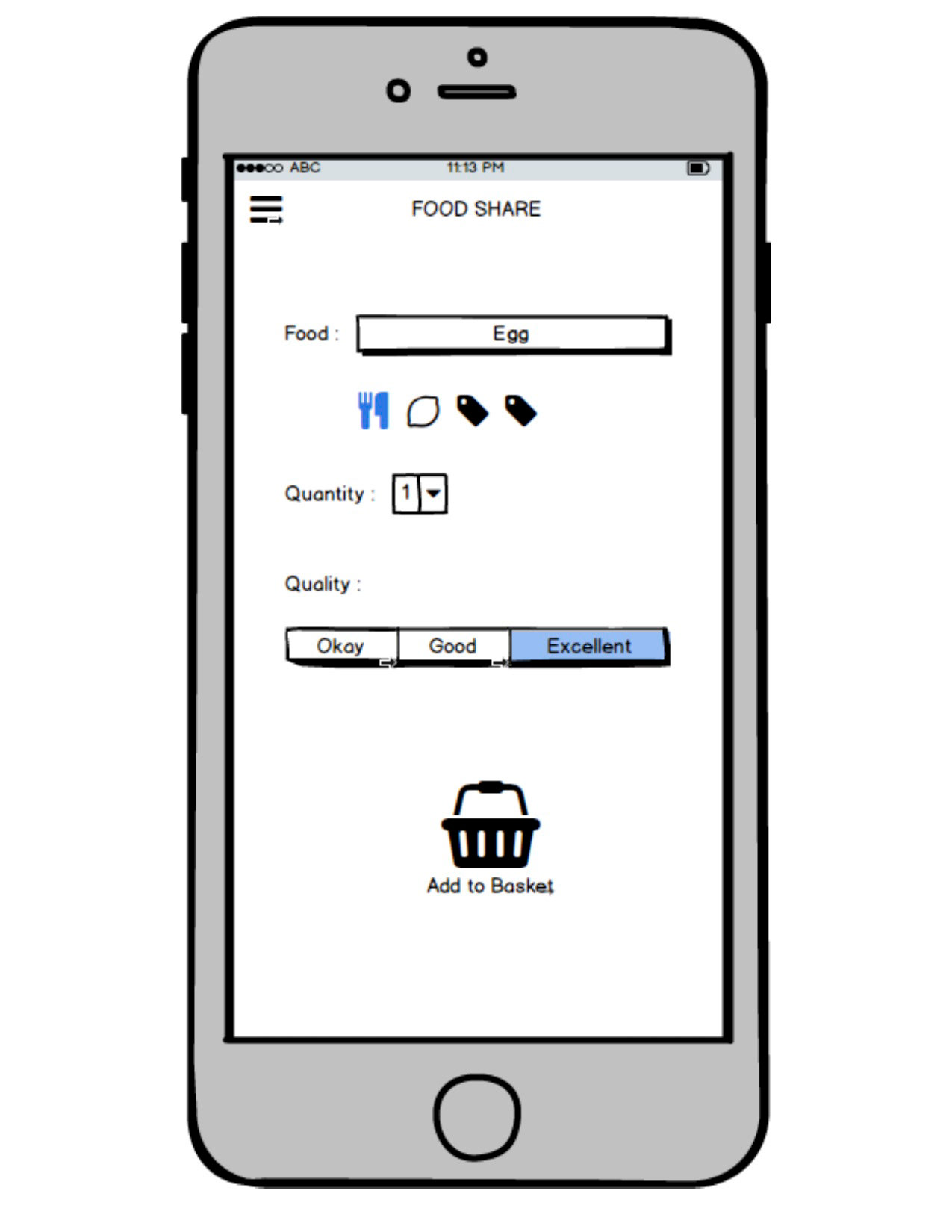

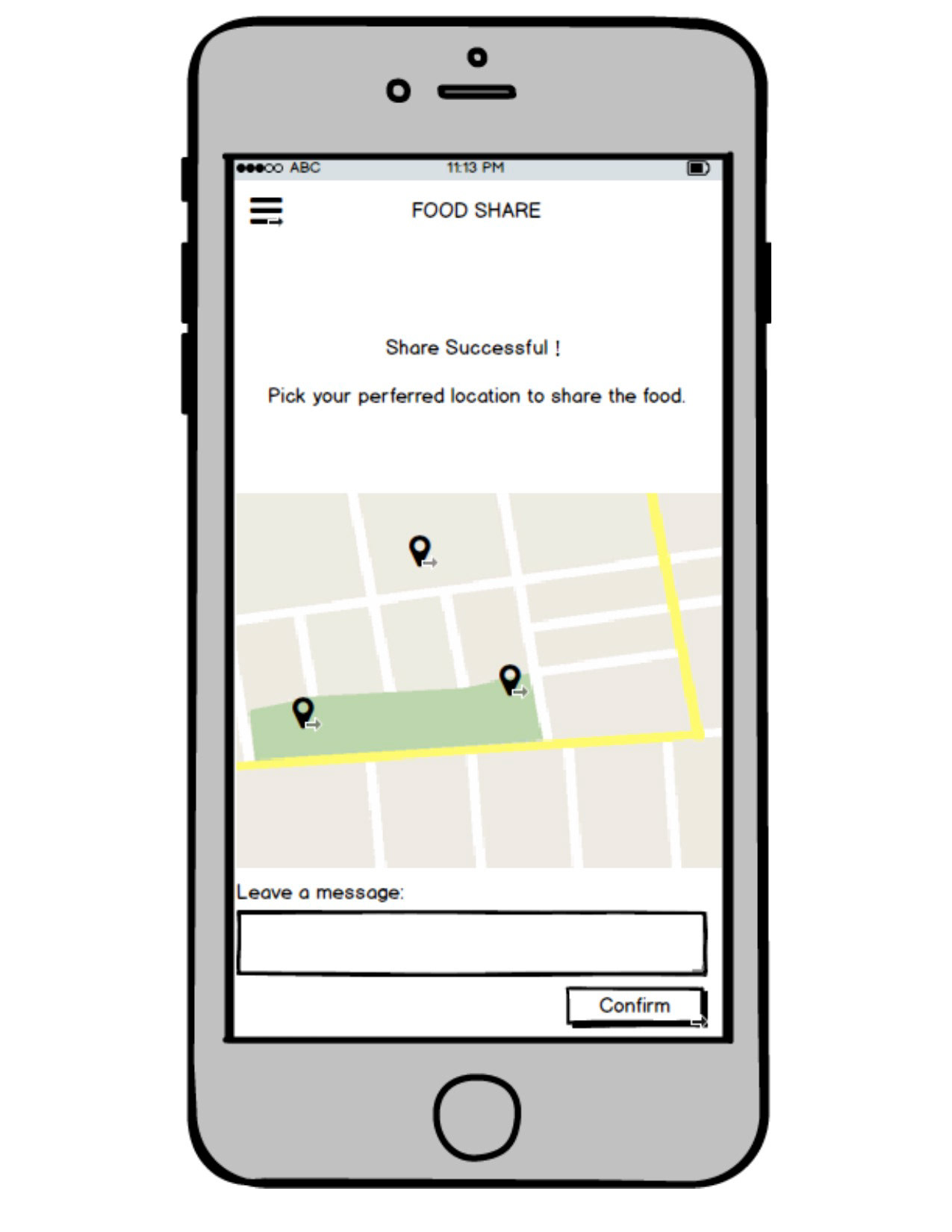
Request Food:
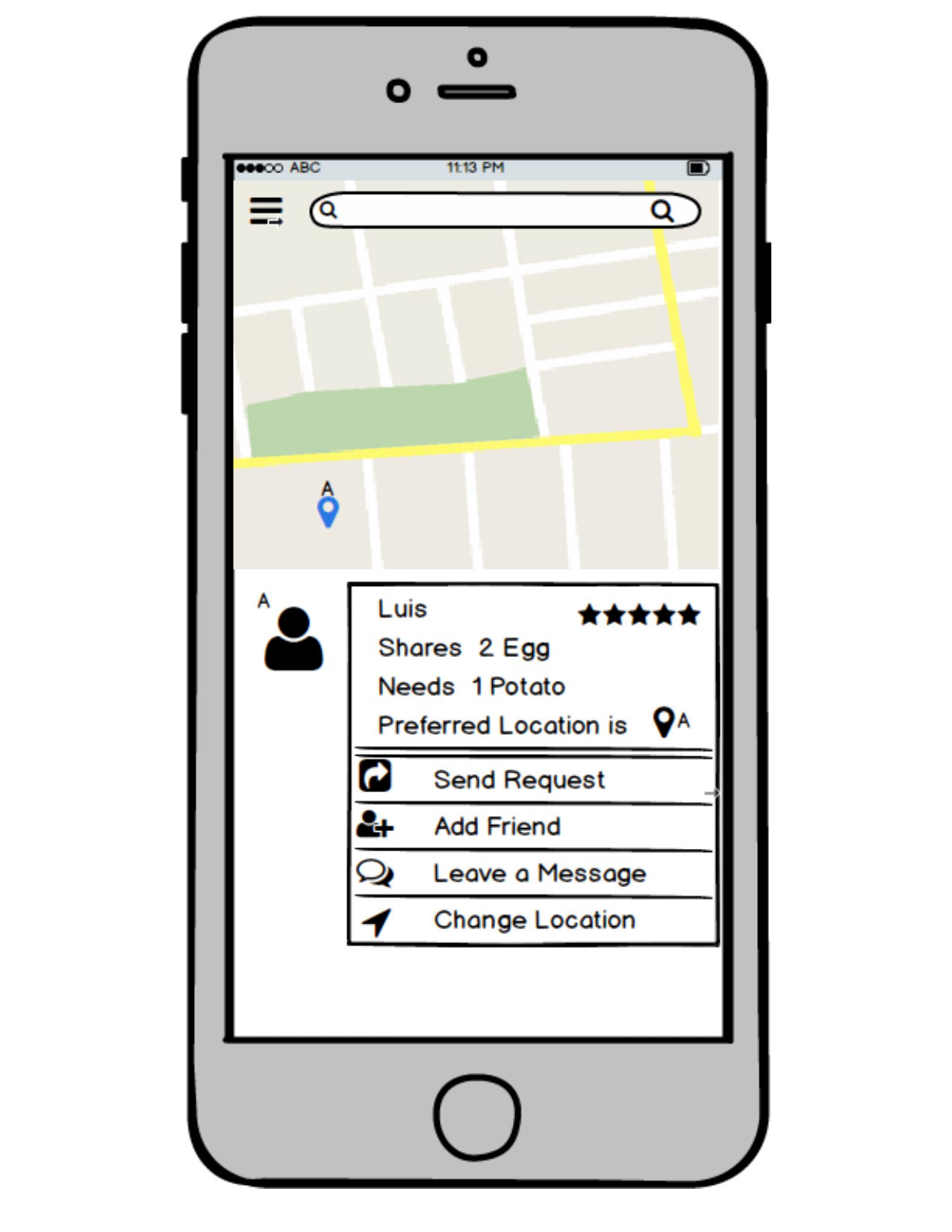
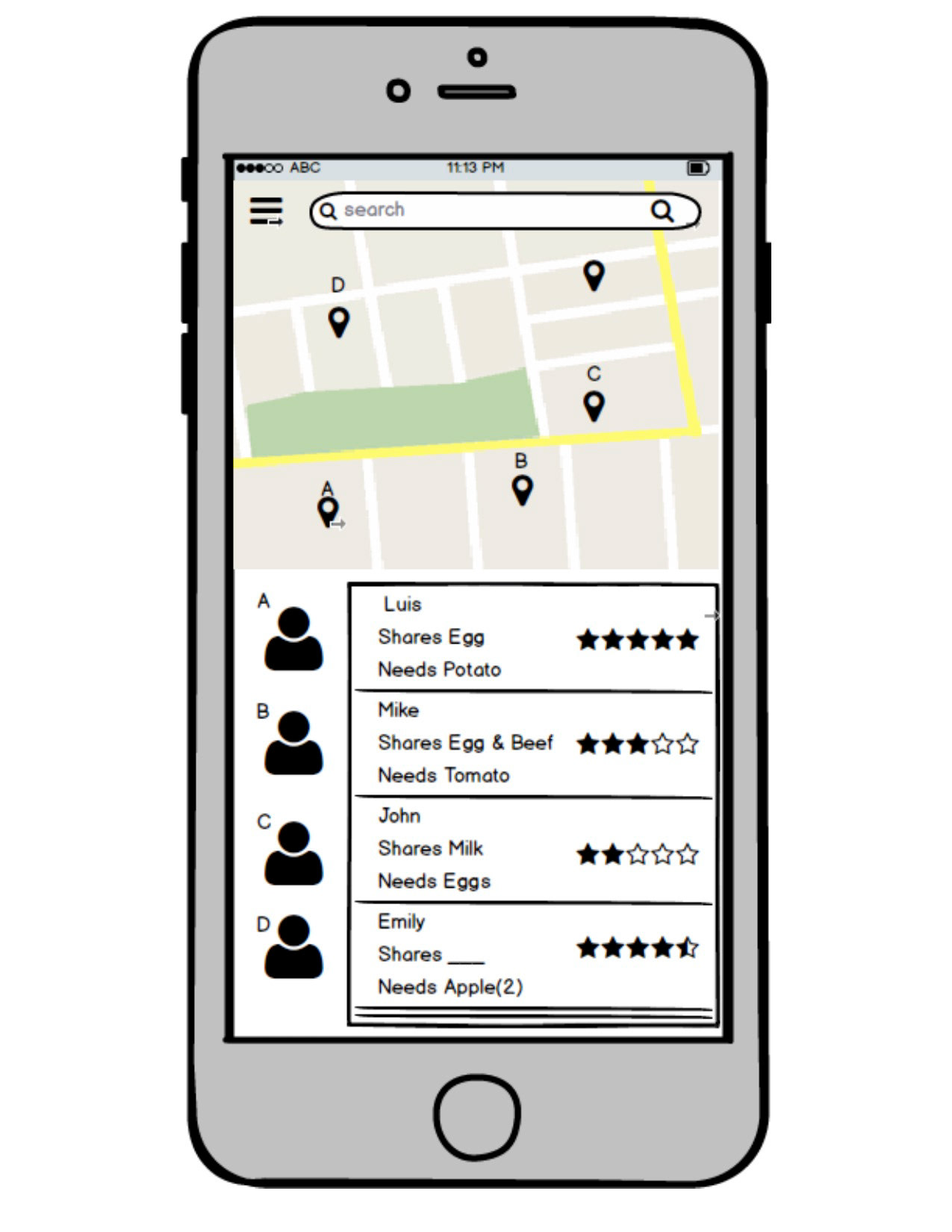
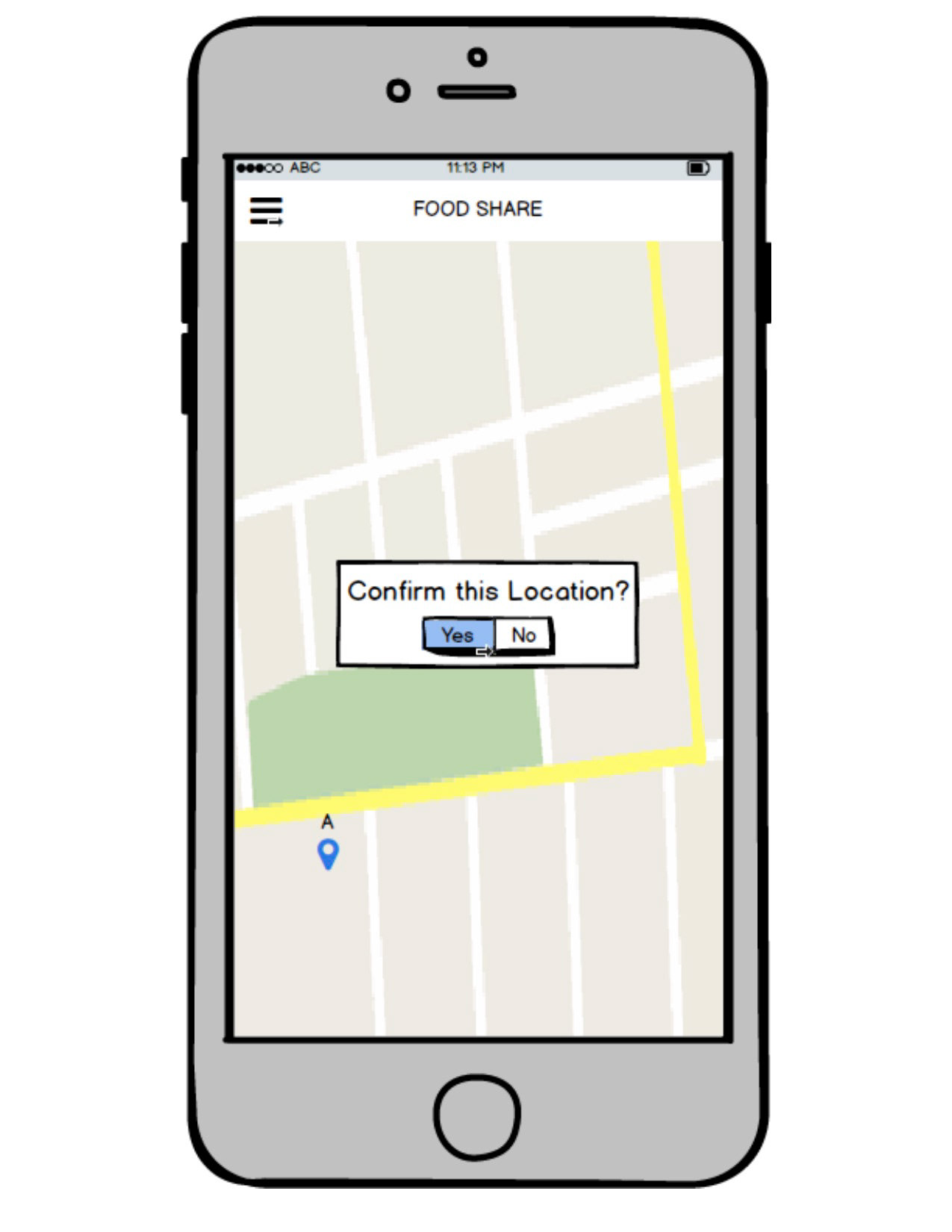
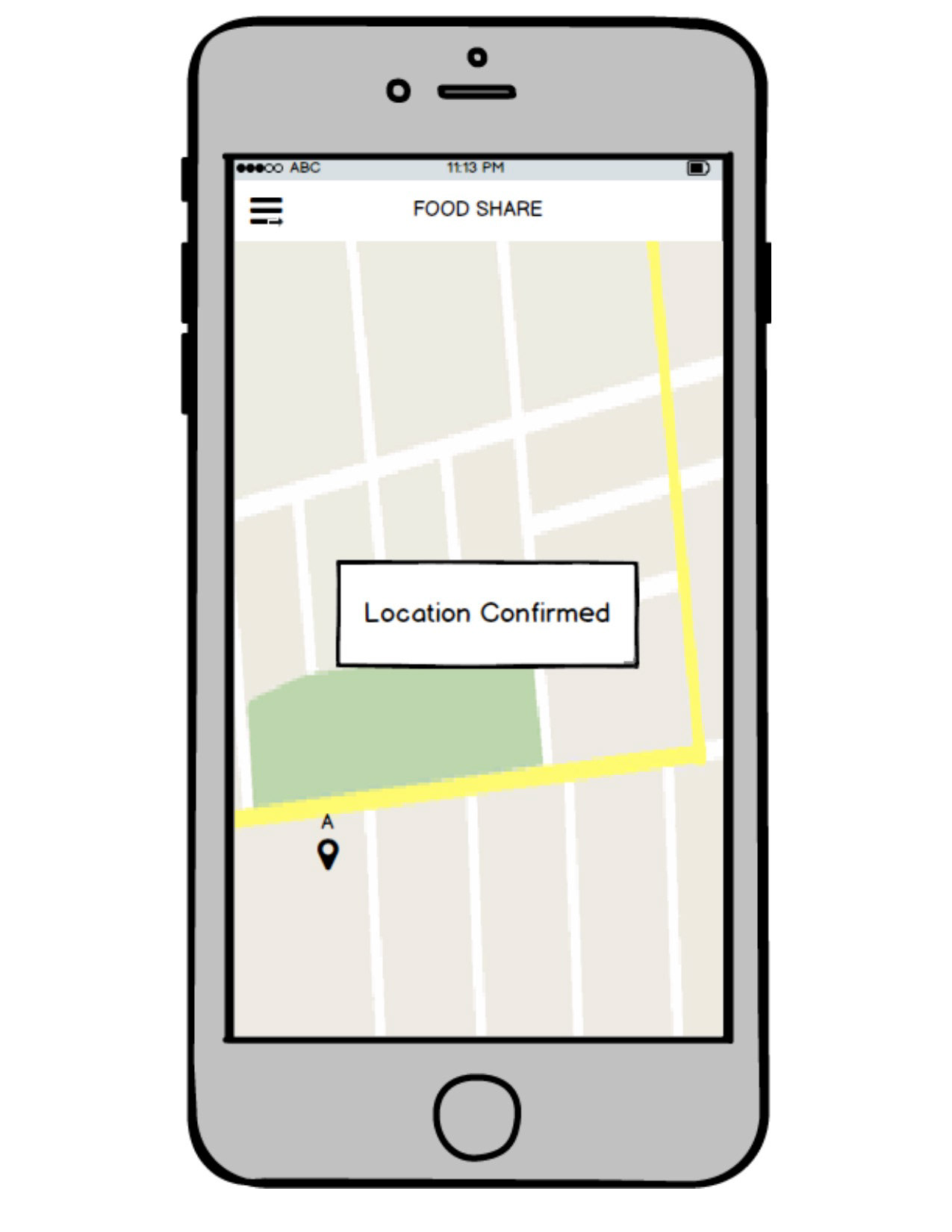
Pencil To Pixel
Finally, I design the user interface using Sketch and create the prototype on InVision.
Share Food:
1. When users are sharing food, they only need to input the name, description, and categories. Also, they can add photos, which will better help to specify the quantity and quality of the food. We remind the users to only share fresh and edible food here.
2. If the user is the owner of an establishment, he / she can share in business mode, where they don't have to input basic information.
3. Instant feedback of successful sharing is provided to users.
2. If the user is the owner of an establishment, he / she can share in business mode, where they don't have to input basic information.
3. Instant feedback of successful sharing is provided to users.
Request Food:
1. The homepage contains more information, including the sharing item, requested item, and the notification of any new activities.
2. When requesting food, users can also see what establishments are sharing their food, such as supermarkets and restaurants.
2. When requesting food, users can also see what establishments are sharing their food, such as supermarkets and restaurants.
Notification & Rating Feature
Users can give each other a rating after sharing an item with one another, as one FoodShare post. The rating can help others to consider when they are deciding whether or not to request a certain user's food.
Final Testing
I went back to the local soup kitchen for final test and interviewed 10 users. Most of the feedbacks were highly positive: they would love to see FoodShare came alive and believe that it can solve the food wastage and hunger issue in US. Mostly, they think FoodShare is very useful, meaningful, and helpful for the obstacle they are facing everyday.
My Takeaway
FoodShare is a great experience for me to solve real-world issues and design for the people who I wouldn't have met otherwise. The iterative design process improves the product step by step and really hones my ability of user experience design. I love this project because, to me, user experience design is a commitment to develop products with purpose, compassion, and curiosity.

